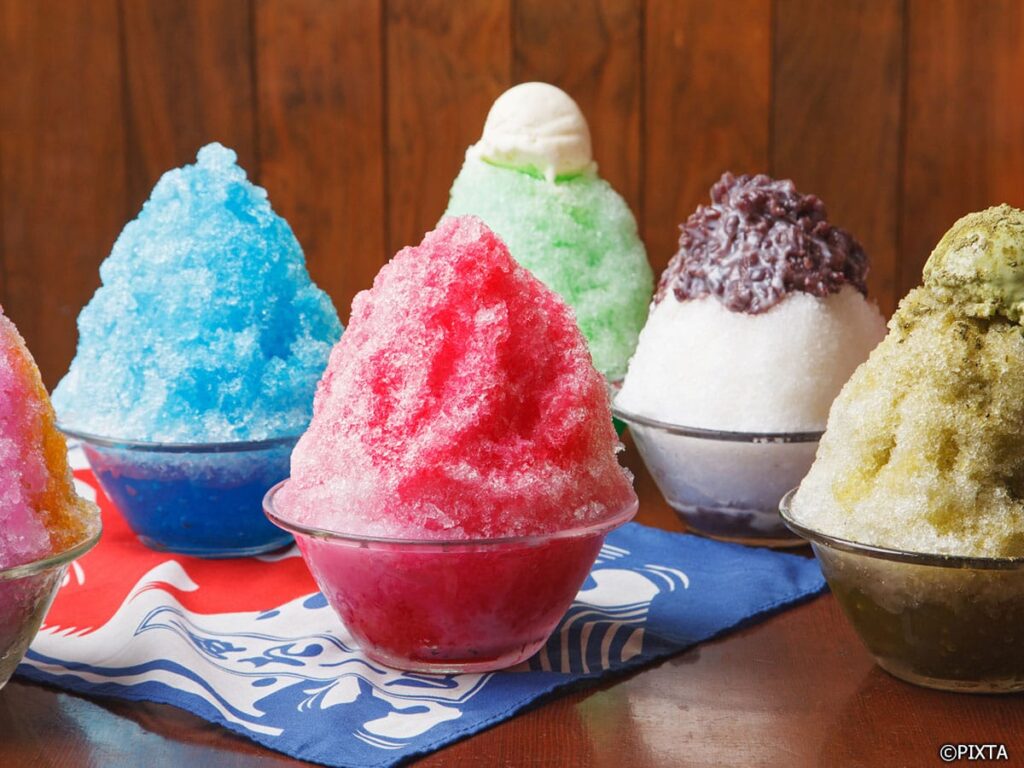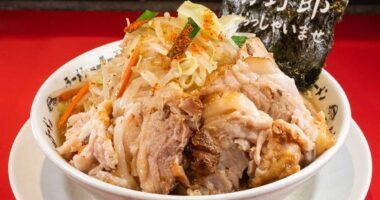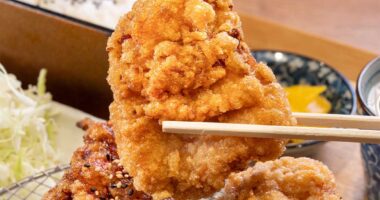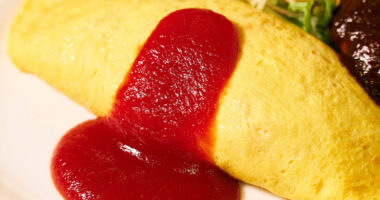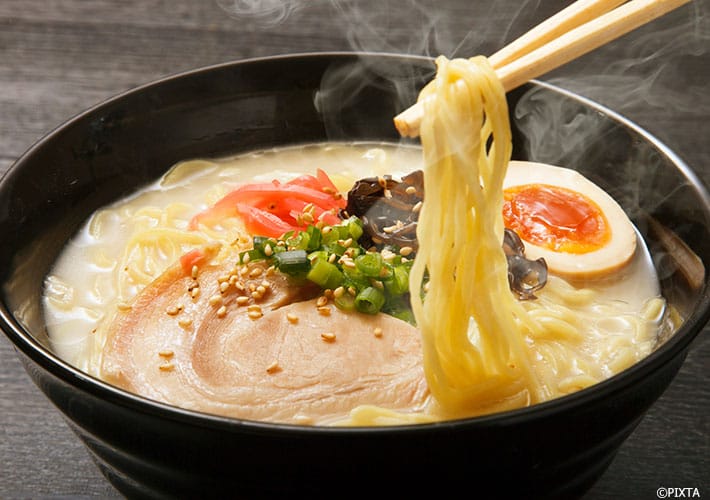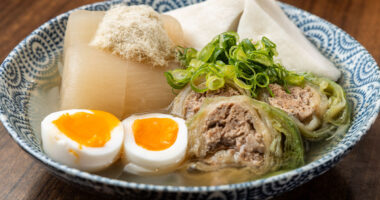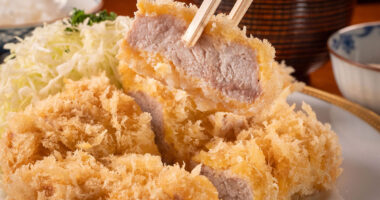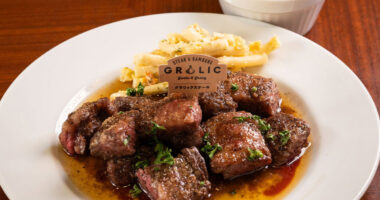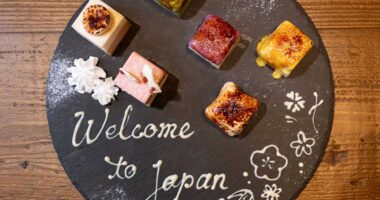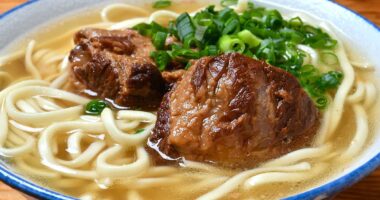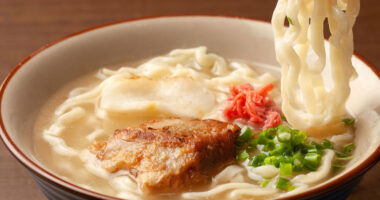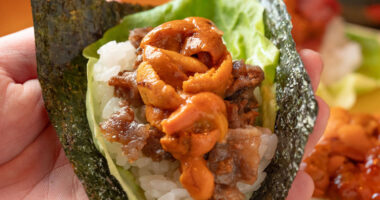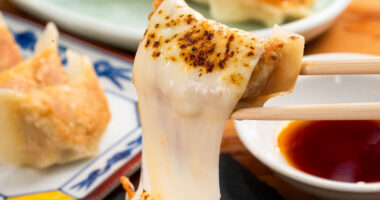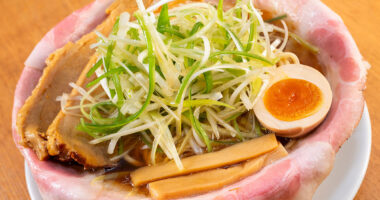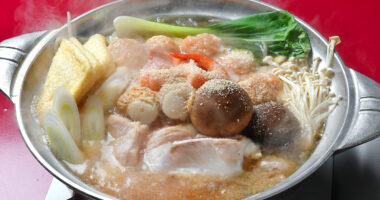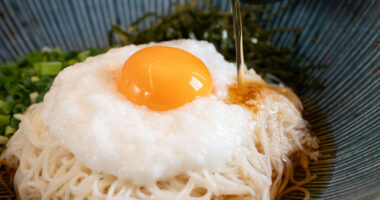Summers in Japan can get quite hot and humid. When the thermometer rises, there’s nothing quite like indulging in a refreshing, icy treat. Fortunately for you, there’s a wide variety of traditional and modern frozen desserts in Japan ready to cool you down and please your senses. In this article, we’ll introduce you to some of Japan’s most beloved icy delights.

An icy delight served in Japan.
What are Japan’s iced desserts?
Japan’s iced desserts are a delightful array of frozen treats that offer a refreshing escape from the summer heat. These desserts, often infused with unique and flavorful ingredients native to Japan, come in a variety of forms. Among the most popular are かき氷 kakigōri, a traditional dessert made from shaved ice and flavored syrup; アイスクリーム aisukurīmu, or ice cream, which can range from traditional flavors like matcha to more adventurous options; and アイスキャンディー aisukyandī (lit. “ice candy”), a popsicle-like treat that comes in various flavors. Both traditional and modern variations of these desserts coexist, providing a fascinating exploration of Japan’s culinary creativity.
Where to get Japanese iced desserts
Japan’s iced desserts can be found at various locations, including dessert shops, cafes, convenience stores, supermarkets, vending machines and summer festivals. Specialty shops dedicated to shaved ice and other frozen treats often offer unique flavors and toppings, while convenience stores and supermarkets provide a budget-friendly option for those looking to try a variety of iced desserts. Vending machines selling ice cream can also be found in train stations, shopping centers and other public facilities. You may even find the occasional vendor selling frozen treats from a food cart, although their numbers are rapidly shrinking.
Types of Japanese iced desserts

A delicious bowl of Unjikintoki shaved ice.
Kakigōri (shaved ice): Kakigori is a traditional Japanese dessert made from shaved ice and flavored syrup, often garnished with sweetened condensed milk, azuki beans, or fruit. The ice is shaved into a fluffy, snow-like consistency, which absorbs the syrup and creates a melt-in-your-mouth experience. The texture and refreshing taste make it a popular choice during the hot summer months.
Traditional kakigori often features simple flavors like matcha (green tea), strawberry, or lemon. A classic favorite is 宇治金時 ujikintoki, which consists of shaved ice topped with matcha syrup, sweetened azuki beans, and mochi (rice cake) pieces. Prices run from 400 to 600 JPY for plain syrup versions to 1,000 JPY and over for versions with additional ingredients like Ujikintoki.
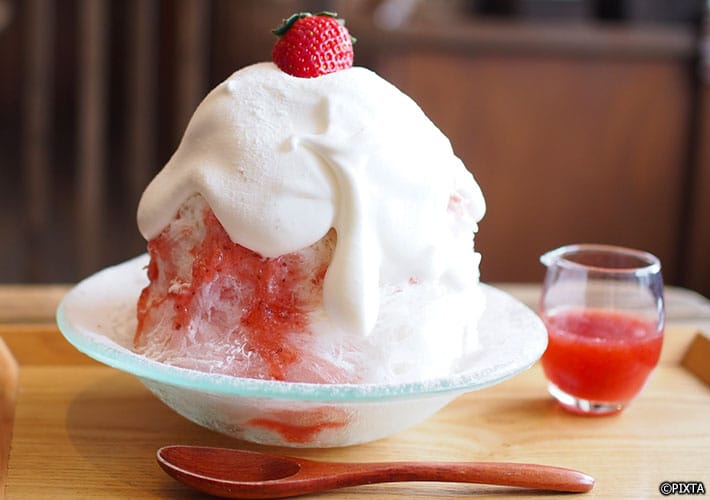
A modern twist on kakigori with a strawberry shortcake theme.
Modern kakigori varieties experiment with innovative flavors and creative presentations. You might find combinations like mango and passion fruit, coffee with whipped cream, custard, chocolate shavings or even savory ingredients like salted caramel. Some shops serve kakigori with a scoop of ice cream or a drizzle of fruit purée. These creations can run well over 1,500 JPY and sometimes even over 2,000 JPY for the fanciest types featuring premium seasonal fruits, gold leaf, etc. and ice made with natural spring water. Boozy versions are also available at some trendy shops and cafes.
You can easily tell if a shop is selling kakigori if you see a banner such as the one below displaying the kanji 氷 for ice:

The iconic kakigori banner is a familiar sight when temperatures climb in Japan.
Aisukurīmu (ice cream): Uniquely Japanese ice cream flavors can range from traditional offerings like matcha (green tea) and black sesame to more adventurous options like wasabi, soy sauce, or even squid ink. Of course, universally enjoyed flavors like vanilla, chocolate, and fruit flavors are also available in Japan. Soft serve ice cream, known as ソフトクリーム sofuto kurīmu, is particularly popular in Japan and can be found at roadside stands, tourist attractions, and specialty shops. Prices range from 100-200 JPY for ice cream packs and cups sold in convenience stores and supermarkets (400-500 JPY for premium brands). As for ice cream served in stalls and stores, expect to pay around 300 to 400 JPY for soft serve ice cream and up to 500 JPY or more for hard ice cream.

If you like matcha ice cream, wait until you try it in Japan.
パフェ pafe (parfait): The Japanese parfait is a layered dessert served in a tall glass, akin to a sundae. It typically includes ice cream or frozen yogurt, fruits, and crunchy elements like cornflakes or granola. Beautifully presented, these parfaits offer a variety of textures and flavors, often featuring seasonal fruits.

Delicious Japanese ice cream parfaits.
In recent years, a trend called 締めパフェ shime pafe has emerged where diners conclude their meal or drinking session with a parfait. This trend, which originated in Hokkaido in 2015, has gained popularity and media attention and has now spread nationwide, even giving rise to parfait shops that stay open until late at night. Parfaits will typically cost anywhere between 700 to 1000 JPY for the most inexpensive versions to several thousands of yen for the most fancy versions at tea salons and cafes featuring premium fruits and ingredients.
Aisukyandī (lit. “ice candy”): Ice candy, similar to a popsicle, is a popular frozen treat that comes in various flavors and is often enjoyed during the hot summer months. Traditional flavors include ramune (a fizzy, lemon-lime soda), mikan (mandarin orange), and salt watermelon. Modern varieties may feature unique combinations like yuzu and ginger or matcha and white chocolate. Convenience stores and supermarkets sell popular brands, typically available for under 100 JPY each, while versions sold in shops may cost a few hundred yen and over 500 JPY for premium versions with chunks of fruit or other ingredients inside.

Mandarin orange- and ramune-flavored aisukyandī bars.
Regional specialties: Different regions of Japan showcase their unique flavors and ingredients through their iced desserts. For example, Hokkaido is famous for its high-quality dairy products, which are showcased in its rich, creamy ice cream. In particular, the region’s lavender ice cream, made with locally grown lavender, is a must-try treat.
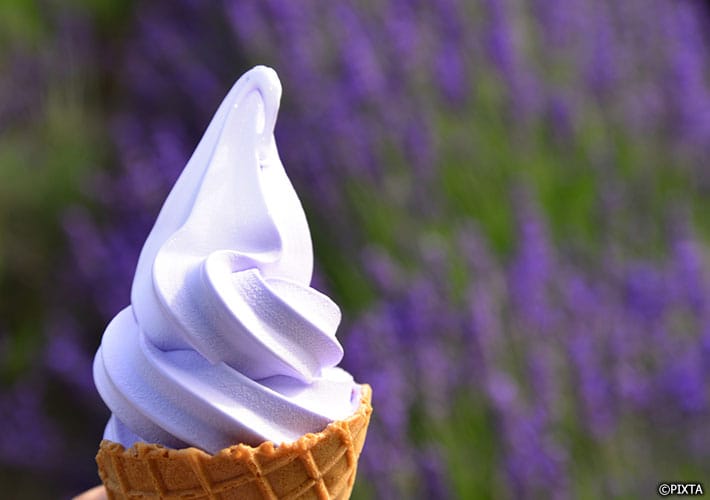
Lavender soft serve ice cream and lavender fields in Nakafurano, Hokkaido.
Meanwhile, Okinawa is known for its tropical fruits, which can be found in various icy treats like fruit-flavored kakigori and ice candies. Okinawan kakigori often includes island flavors like mango, pineapple, and passion fruit, while some establishments offer unique local specialties like the beni-imo (purple sweet potato) kakigori.

A bowl of Okinawan kakigori heaped with tropical fruits.
Tips for enjoying Japanese iced desserts
When sampling Japan’s iced desserts, it’s worth trying both traditional and modern variations to fully appreciate the range of flavors and textures. Don’t shy away from asking for recommendations or inquiring about seasonal specialties, as many dessert shops feature limited-time flavors that highlight seasonal ingredients.
Summer is the perfect time to enjoy fresh fruit flavors, such as peach or watermelon kakigori. In the winter, look for comforting flavors like roasted chestnut or ginger-infused treats. Festivals and events throughout the year often feature unique, limited-time offerings. In particular, enjoying kakigori at summer festivals is a cherished tradition in Japan, offering a delightful way to cool down while immersing yourself in the festive atmosphere.
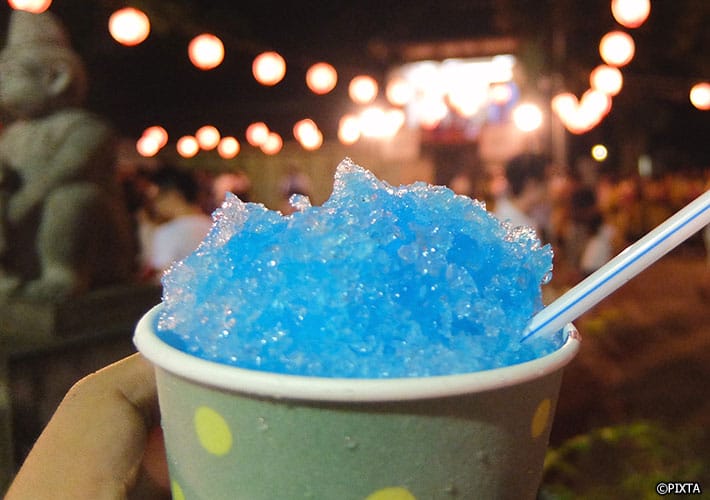
There’s nothing like kakigori from a Japanese festival stand.
Exploring artisanal dessert shops in Japan is another must-do. These establishments take immense pride in their craft, using top-quality ingredients and innovative techniques to create unforgettable icy delights.
In sum, Japan’s iced desserts offer a delightful and refreshing way to explore the country’s culinary landscape. From traditional kakigori to modern ice cream creations, each frozen treat provides a unique taste of Japan’s rich culture and history. As you travel through the country, don’t miss the opportunity to sample regional specialties and seasonal offerings, each showcasing the diverse flavors and ingredients found throughout Japan. Whether you’re a first-time visitor or a seasoned traveler, these icy delights are sure to leave a lasting impression.
